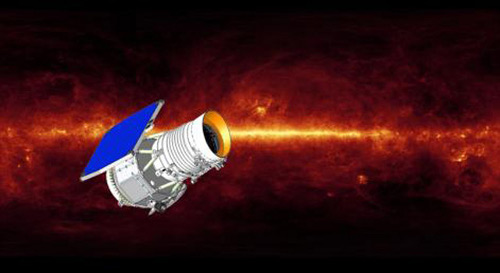(PhysOrg.com) -- Engineers and scientists say the maneuver went off without a hitch, and everything is working properly. The mission's "first-light" images of the sky will be released to the public in about a month, after the telescope has been fully calibrated.
"The cover floated away as we planned," said William Irace, the mission's project manager at NASA's Jet Propulsion Laboratory, Pasadena, Calif. "Our detectors are soaking up starlight for the first time."
WISE will perform the most detailed infrared survey of the entire sky to date. Its millions of images will expose the dark side of the cosmos -- objects, such as asteroids, stars and galaxies, that are too cool or dusty to be seen with visible light. The telescope will survey the sky one-and-a-half times in nine months, ending its primary mission when the coolant it needs to see infrared light evaporates away.
WISE launched on Dec. 14 from Vandenberg Air Force Base in California. Once it was thoroughly checked out in space, it was ready to "flip its lid."
The cover served as the top to a Thermos-like bottle that chilled the instrument -- a 40-centimeter (16-inch) telescope and four infrared detector arrays with one million pixels each. The instrument must be maintained at frosty temperatures, as cold as below 8 Kelvin (minus 447 degrees Fahrenheit), to prevent it from picking up its own heat, or infrared, glow. The cover kept everything cool on the ground by sealing a vacuum space into the instrument chamber. In the same way that Thermos bottles use thin vacuum layers to keep your coffee warm or iced tea cold, the vacuum space inside WISE stopped heat from getting in. Now, space itself will provide the instrument with an even better vacuum than before.
The cover also protected the instrument from stray sunlight and extra heat during launch.
 http://www.physorg.com/news181381778.html
http://www.physorg.com/news181381778.html